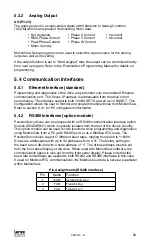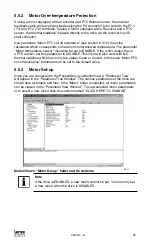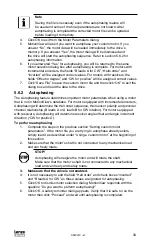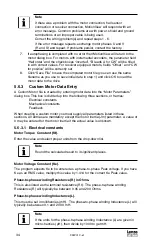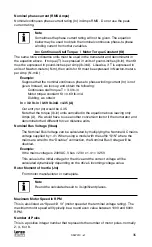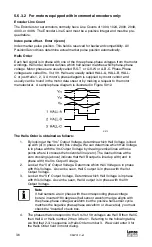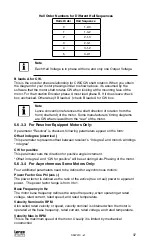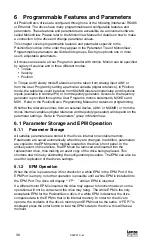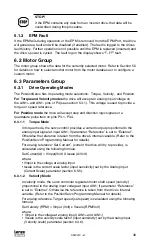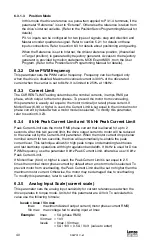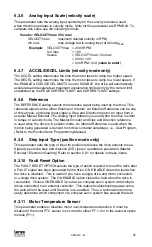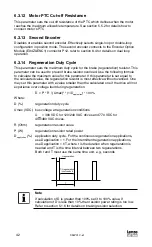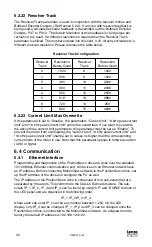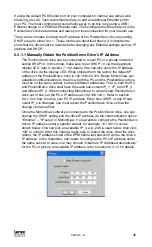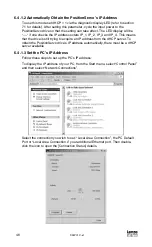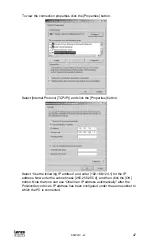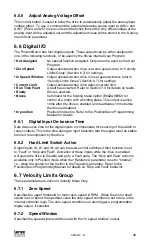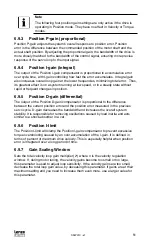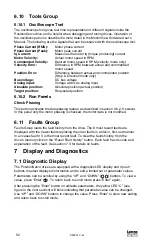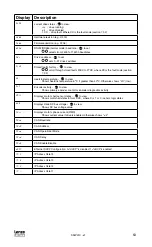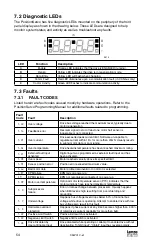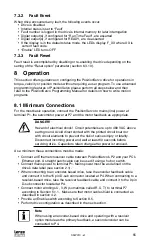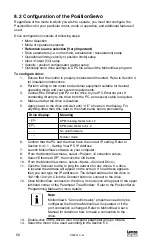
S94P01C -e1
43
6.3.15 Encoder Repeat Source
This parameter sets the feedback source signal for the buffered encoder outputs (P3.7
-P3.12). The source can be the drive’s feedback input (P4) or an optional feedback
module (resolver, second encoder etc.)
6.3.16 System to Master Ratio
This parameter is used to set the scale between the reference pulse train (when
operating in position mode) and the system feedback device. In a single loop
configuration, the system feedback device is the motor encoder or resolver. In a dual-
loop system the system encoder is the second encoder. See sections 8.3 and 8.4 for
details.
6.3.17 Second to Prime Encoder Ratio
This parameter sets the ratio between the secondary encoder and the primary
feedback device when the drive is configured to operate in dual-loop mode. When
the primary feedback device is a resolver, the pulse count is fixed at 65,536. The
resolutions of encoders are “post quadrature” (PPR x 4). See section 8.4
Note
Post quadrature pulse count is four times the pulses-per-revolution
(PPR) of the encoder.
6.3.18 Autoboot
When set to “Enabled” the drive will start to execute the user’s program immediately
after cold boot (reset). Otherwise the user program has to be started from MotionView
or from the Host interface.
6.3.19 Group ID
Refer to the PositionServo Programming Manual for details. This parameter is only
needed for operations over Ethernet network.
6.3.20 Enable Switch Function
If set to “Run”, input IN_A3 (P3.29) acts as an “Enable” input when the user program
is not executing. If the user program is executing, the function will always be “Inhibit”
regardless of the setting. This parameter is needed so the drive can be Enabled/
Disabled without running a user’s program.
6.3.21 User Units
This parameter sets up the relationship between User Units and motor revolutions.
From here you can determine how many User Units there is in one motor revolution.
This parameter allows the user to scale motion moves to represent a desired unit of
measure, (inches, meters, in/sec, meters/sec, etc).
For example:
A linear actuator allows a displacement of 2.5” with every revolution of the motor’s
shaft.
User Units = Revolutions / Unit
User Units = 1 Revolutions / 2.5 Inches
User Units = 1 / 2.5 Revolutions / inch
User Units = 0.4 Revolutions / inch

